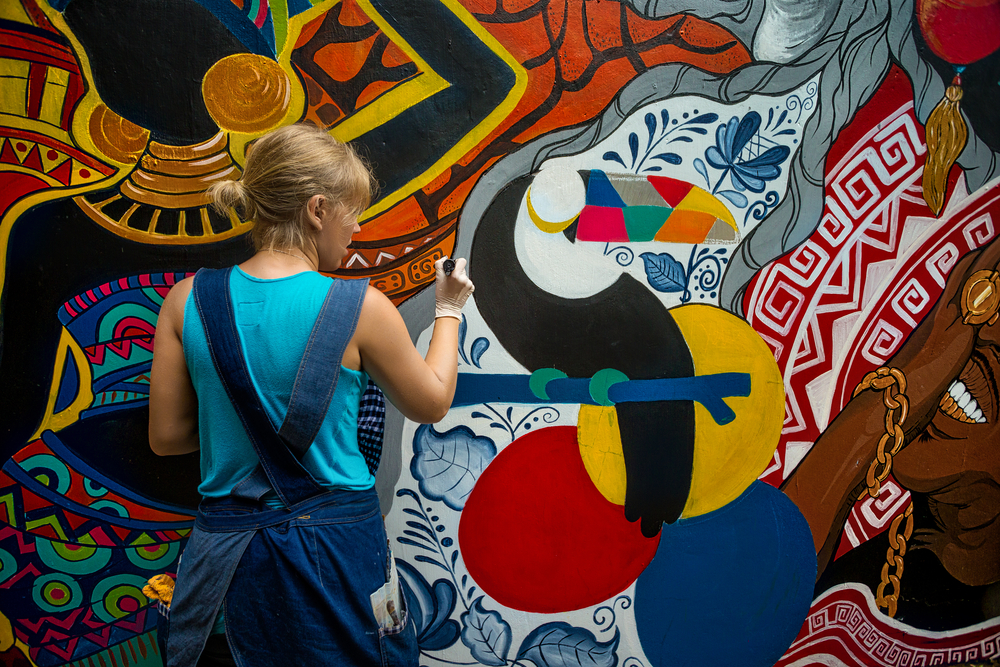
A lot of policy makers are taking new measures to improve sustainability. Environmental Protection Online published an article about a number of the municipalities around the world that are taking new measures to go green.
One of the biggest ways that eco-friendly communities can go green is by investing in new economic initiatives that don’t have a huge carbon footprint. Art is a great example of this. Cities can use art to draw tourists, rather than relying on emission producing activities such as motor sports.
Public Art Can Be Fantastic for Eco-Friendly Communities to Boost their Economies
Public art is arresting. It’s vexing. It’s inspiring. It’s often beautiful. It makes common spaces more interesting. But is it a legitimate source of economic stimulus? Is it really a great initiative for sustainable communities?
These five examples strongly suggest that, yes, public art is an underappreciated tool in economic policymakers’ arsenals, especially if they are trying to stimulate the economy without lowering the carbon footprint. Remember them next time you stop to wonder at an outdoor sculpture or mural in your hometown.
1. Creative Art Works Is a Huge Summer Employer for NYC Youths
What are your kids doing this summer? If you live in New York City, they might want to apply for the Public Art Youth Employment Program, one of the nation’s biggest creative jobs programs for young people. Paid, full-time summer gigs creating “large-scale public art in Manhattan” turn into part-time after-school jobs when the school year hits, keeping kids out of trouble (and exercising their creative cortices) year-round – while putting some spending money in their pockets. It is a great initiative that hasn’t increased the Big Apple’s carbon footprint.
2. Dupont Underground Is Hiring (and Growing)
Washington, D.C.’s Dupont Underground, one of the most ambitious and innovative public art projects, already has a full-time staff of seven. But that’s not enough, according to a recent call for applications to the organization’s coveted workspace residency. Driven by grants from local organizations like Syga Thomas’s Thomas Foundation, Dupont Underground is breathing new life into D.C.’s most conspicuous piece of abandoned infrastructure – right in the heart of the city. Using the old infrastructure was a great idea that didn’t require leaving a larger carbon footprint to build a new one.
3. ArtWorks Posted 200 Job Openings in Cincinnati in 2015
Those are “bringing back third shift at the factory” numbers. For ArtWorks, a Cincinnati-based public art nonprofit, they’re par for the course. In early 2015, ArtWorks announced that it needed to fill 50 professional (adult) and 150 youth apprentice positions within months.
All positions were paid, though the youth apprentice gig wasn’t exactly a gravy train. With an “enterprise-driven product” component that produced salable items, the project was at least partially self-sustaining. And it had a tangible, albeit indirect impact on needy Cincinnati families’ well-being: one of the deliverables was a tranche of 150 capes for low-income children – one less piece of clothing for cash-strapped families to buy ahead of the cold Ohio winter. This was better for the environment than using new clothes that would have needed to consume more natural resources to produce.
4. Wynwood Walls Drives an Urban Renaissance
Forget Miami Beach, skip Little Havana. Miami’s hottest neighborhood is Wynwood, a formerly unassuming square west of downtown. The community found a way to repurpose the area without hurting the environment by having to completely revamp the existing infrastructure. Until recently, Wynwood was known primarily for its chop shops and low-rent storefronts – a gritty, glitz-less patch that tourists had absolutely no reason to patronize.
That all changed in 2009, when urbanist art patron Tony Goldman conceived what would become Florida’s most successful placemaking scheme in recent memory: Wynwood Walls, an outdoor mural and sculpture network on a vast scale. Today, Wynwood is abuzz with trendy shops, eateries, new housing, and camera-toting tourists. Property values have risen accordingly, too.
5. “Before I Die” Goes International
Candy Chang’s “Before I Die” project started as one artist’s response to a deeply felt personal loss. The original installation, at an abandoned residence in New Orleans, “[invited] people to contemplate death, reflect on life, and share their personal aspirations in public.” It drew unprecedented crowds to a downtrodden corner of the city, breathing new life into area businesses and giving locals some measure of hope — Wynwood Walls in miniature.
Today, more than 2,000 “Before I Die” walls pepper more than 70 countries, including such unlikely places as Iraq and Kazakhstan. Each is a magnet for public art enthusiasts, who happily spend money at nearby shops and restaurants – and a compelling testament to the constructive power of grief, properly channeled.
Public Art Can Be Great for the Economies of Eco-Friendly Communities
Eco-friendly communities are looking for creative strategies to boost their local economies. These examples show that public art can be very effective at that.

